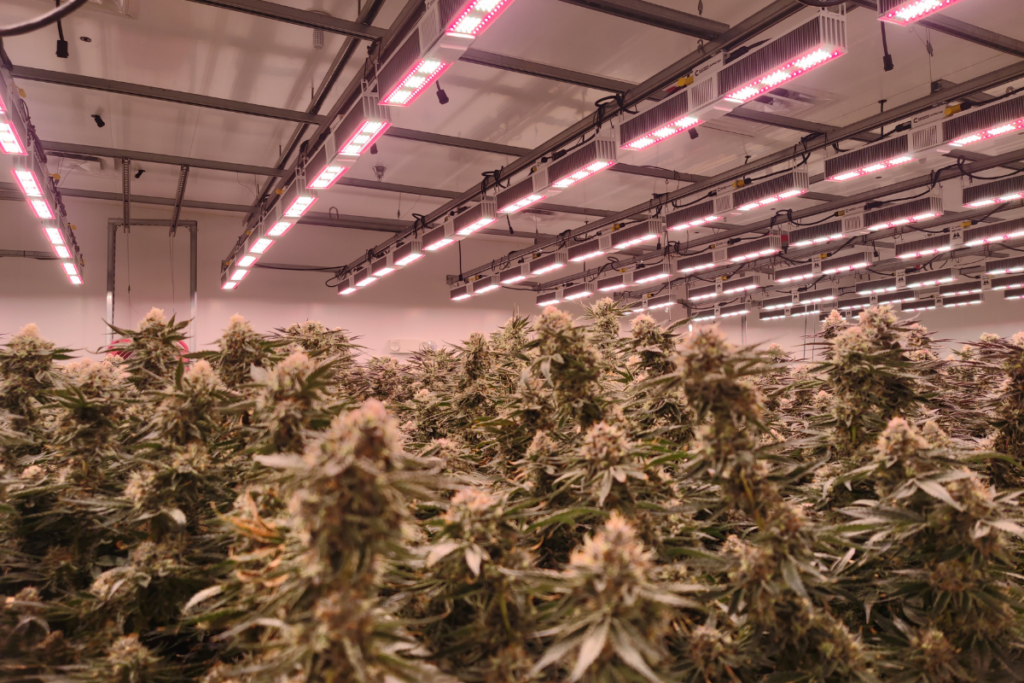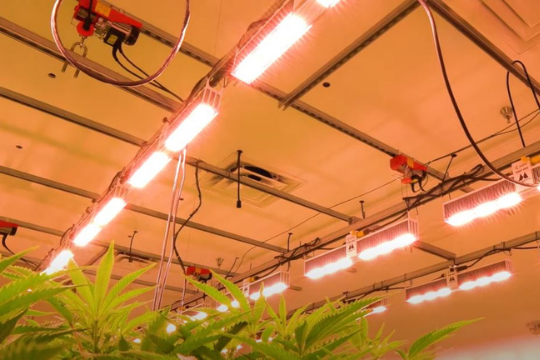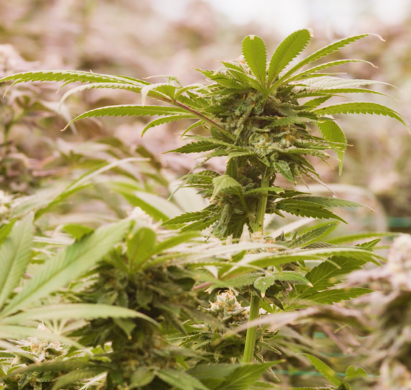
Based in Columbus, Grow Ohio is a cannabis cultivator and processor dedicated to providing safe & consistent medical marijuana that meets the same strict standards as pharmaceutical medication. Their operations have grown quickly over the years, leading Grow Ohio to look for new ways of maximizing efficiency, without sacrificing any quality.
A big part of this new strategy involves swapping out many of their MH (Metal Halide) and HPS (High-Pressure Sodium) grow lights for LEDs, which often cost more upfront but run far more efficiently in the long run. But which LEDs to go with? For that question, Grow Ohio set up a trial between California Lightworks and three of our strongest competitors.
Grow Ohio tested the LEDs by dividing an indoor room of growing tables amongst the four companies chosen – California Lightworks, Gavita, Grower’s Choice, and PhotoBio. This gave them a clear side-by-side comparison for every aspect of the yield. Across all aspects – from mass, to bud growth to overall quality, California Lightworks’ LEDs were the clear standout; out- performing every other company we were tested against.
Grow Ohio then decided to test a full room of crops under California Lightworks’ MegaDrive technology. Compared to the rooms still outfitted with HPS lights, California Lightworks was again the clear winner, with the mass (both in terms of grams per square foot and grams per watt) and quality of the yielded crops surpassing those of the others.

MegaDrive made it easy for Glass House Farms to add supplemental lights. The system is built to maximize efficiency while significantly reducing upfront and operating costs.
The secret is the MegaDrive’s 10,000watt single power supply that takes incoming 480 volts through an independent breaker. This power supply is wall mountable, eliminating the need for power drops over the canopy. It is capable of running up to 30 400-watt LED fixtures. These fixtures come with dual spectrum control and separate channels for red and white, which can be dimmed from zero to 100%, either manually or automatically.
MegaDrive also comes with a wireless Bluetooth control system that operates independently or integrates with most popular environmental controllers. The cloud-based data communication system allows you to control functions from any Bluetooth device – and from virtually anywhere in the world.



